World record in frequency comparisons
QuantumFrontiers improved the accuracy of frequency ratios between optical clocks to a fractional uncertainty level of 10–18 [2–4]. This involved performing precise atomic property measurements [5, 6] and employing quantum engineering techniques like twisted light interrogation schemes [7], dynamical decoupling [8], and entanglement [9–11]. The researchers pioneered the first multi-ion [2, 12] and transportable clocks, enabling faster averaging times and geodesy applications [13]. They have also established novel, globally unique systems with low systematic shifts and high sensitivity to new physics, such as highly-charged ions [14] and the thorium nucleus [15], opening new research fields. Building on the world-leading silicon cavity-stabilised lasers, QuantumFrontiers researchers have implemented single-crystal coatings with reduced thermal noise for high stability clocks and identified an unexpected birefringent noise source [16].
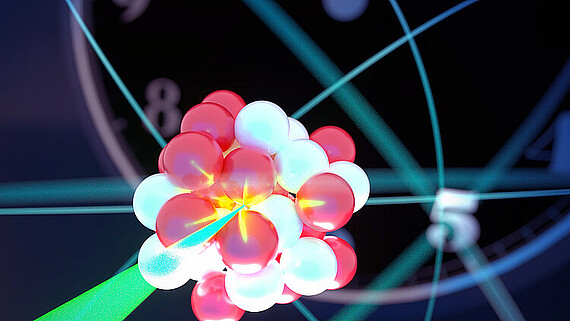
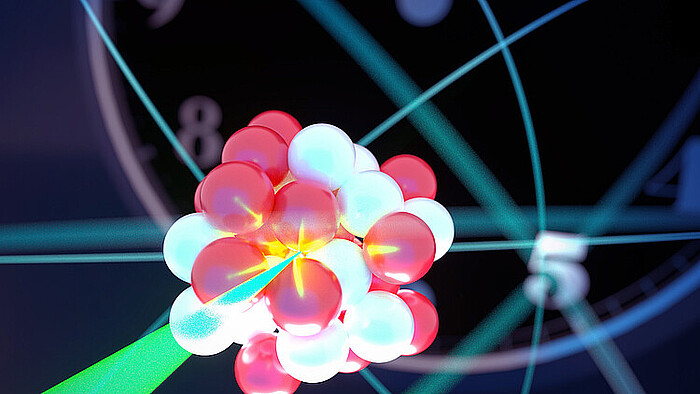
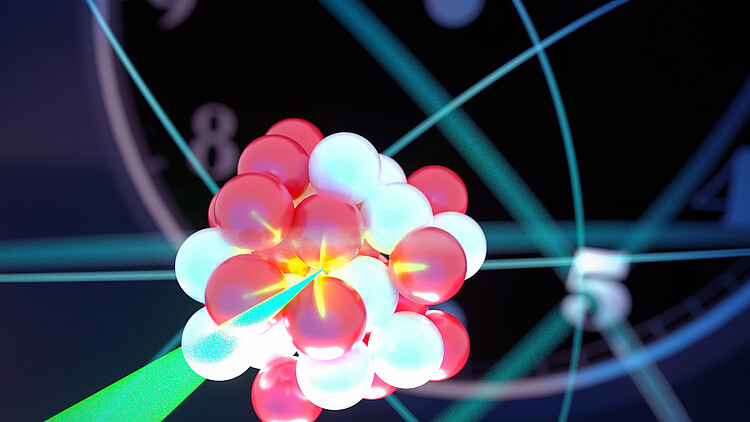
Pushing the limits of atom interferometry
Matter wave interferometry with Bose Einstein Condensates (BEC), pursued by QuantumFrontiers researchers, offers superior control over spatial localisation and systematic shifts [17]. Key parameters to enhance atom interferometer resolution are long probe times and large enclosed areas. They developed ultra-cold sources enabling probe times on the order of seconds [18–20], achieved large momentum transfer beam splitters for large enclosed areas [21], and developed concepts to achieve systematics at the μrad resolution [22]. Surpassing single-particle physics, they devised a technique to generate entangled spin-squeezed states for atom interferometry using rapid trapping potential changes [23], mapped spin-squeezing to momentum states [24], culminating in the realisation of the first entanglement-enhanced atom gravimeter below the standard quantum limit [25].
This article is part of a series on QuantumFrontiers success stories
We identified atomic interactions as a sensitivity limit in squeezed state interferometers and devised tailored states to overcome this [26]. To further push the limits, these techniques will be implemented in the VLBAI facility with a 10 m baseline, which has recently been commissioned with rubidium atoms
Cold Atoms in Space
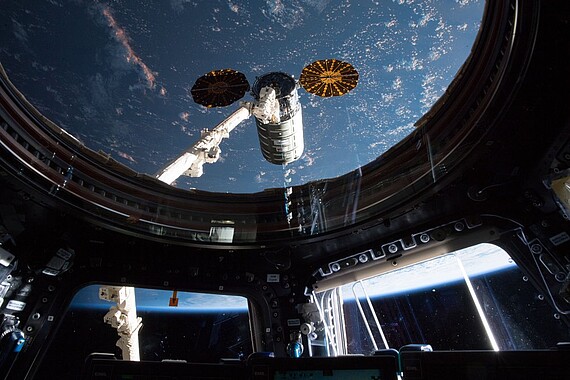
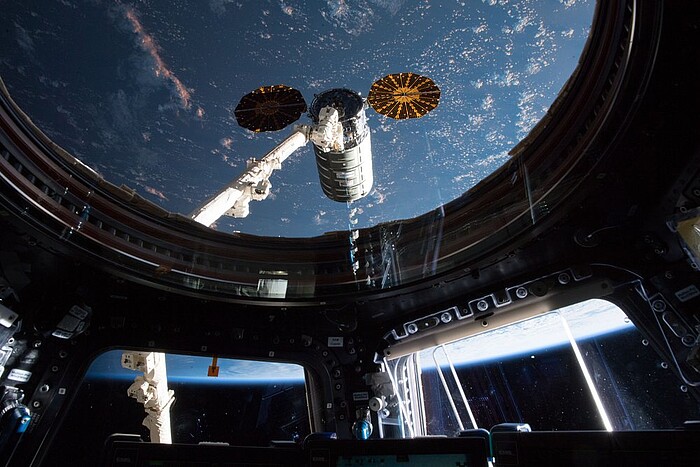
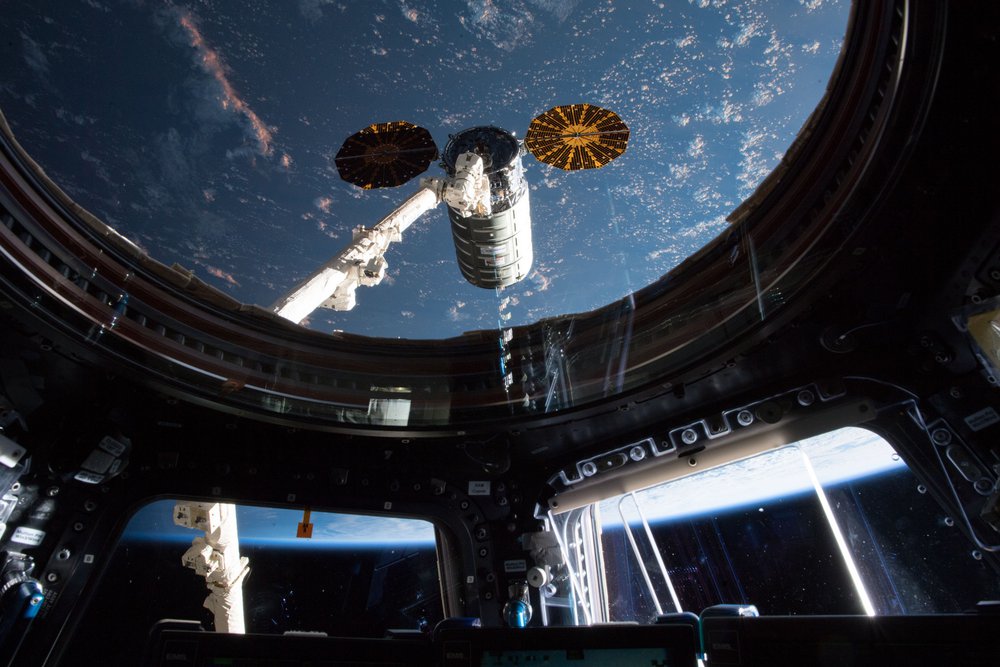 ©
NASA/JPL-Caltech
©
NASA/JPL-Caltech
For ultra-long probe times, space is the ultimate solution. QuantumFrontiers researchers demonstrated the first atom interferometry in space [27] and used the Cold Atom Lab on the ISS, demonstrating its functionality as a source for BEC interferometry [28]. Recently, the first dual-species BEC in space was demonstrated [29], paving the way for quantum tests of the universality of free fall with different species at long interferometry times. QuantumFrontiers principle investigators play key roles in missions like Cold Atom Rubidium Interferometer in Orbit for Quantum Accelerometry (CARIOQA) and the BECCAL, a multi-user facility on the ISS [30].
Publications
-
Bibliography
[1] J. Dickmann, S. Sauer, et int, S. Kroker. Experimental realization of a 12,000-finesse laser cavity based on a low-noise microstructured mirror.
Communications Physics 6. doi:10.1038/s42005-023-01131-1 (2023).[2] H. N. Hausser, J. Keller, et int, T. E. Mehlstäubler. An 115In+-172Yb+ Coulomb crystal clock with 2.5 ×10–18 systematic uncertainty.
arXiv: 2402.16807 [physics.atom-ph] (2024).[3] C. Sanner, N. Huntemann, et int, S. G. Porsev. Optical clock comparison for Lorentz symmetry testing.
Nature 567, 204–208. doi:10.1038/s41586-019-0972-2 (2019).[4] R. Schwarz, S. Dörscher, et int, C. Lisdat. Long term measurement of the 87Sr clock frequency at the limit of primary Cs clocks.
Physical Review Research 2. doi:10.1103/physrevresearch.2.033242 (2020).[5] S. Dörscher, J. Klose, S. Maratha Palli, C. Lisdat. Experimental determination of the E 2–M1 polarizability of the strontium clock transition.
Physical Review Research 5. doi:10.1103/physrevresearch.5.l012013 (2023).[6] C. Lisdat, S. Dörscher, I. Nosske, U. Sterr. Blackbody radiation shift in strontium lattice clocks revisited.
Physical Review Research 3. doi:10.1103/physrevresearch.3.l042036 (2021).[7] R. Lange, N. Huntemann, et int, E. Peik. Excitation of an Electric Octupole Transition by Twisted Light.
Physical Review Letters 129. doi:10.1103/physrevlett.129.253901 (2022).[8] S. Dörscher, A. Al-Masoudi, et int, C. Lisdat. Dynamical decoupling of laser phase noise in compound atomic clocks.
Communications Physics 3. doi:10.1038/s42005-020-00452-9 (2020).[9] R. Kaubruegger, D. V. Vasilyev, et int, P. Zoller. Quantum Variational Optimization of Ramsey Interferometry and Atomic Clocks.
Physical Review X 11, 041045. doi:10.1103/PhysRevX.11.041045 (2021).[10] M. Schulte, C. Lisdat, et int, K. Hammerer. Prospects and Challenges for Squeezing-Enhanced Optical Atomic Clocks.
Nature Communications 11, 5955. doi:10.1038/s41467-020-19403-7 (2020).[11] T. Kielinski, P. Schmidt, K. Hammerer. GHZ protocols enhance frequency metrology despite spontaneous decay.
arXiv: 2406.11639 (2024).[12] L. Pelzer, K. Dietze, et int, P. O. Schmidt. Multi-ion frequency reference using dynamical decoupling.
Phys. Rev. Lett. 133, 033203. doi:10.1103/PhysRevLett.133.033203 (2024).[13] J. Grotti, I. Nosske, et int, C. Lisdat. Long-distance chronometric leveling with a portable optical clock.
Physical Review Applied 21. doi:10.1103/physrevapplied.21.l061001 (2024).[14] S. A. King, L. J. Spieß, et int, P. O. Schmidt. An optical atomic clock based on a highly charged ion.
Nature 611, 43–47. doi:10.1038/s41586-022-05245-4 (2022).[15] J. Tiedau, M. V. Okhapkin, et int, T. Schumm. Laser Excitation of the Th-229 Nucleus.
Physical Review Letters 132. doi:10.1103/physrevlett.132.182501 (2024).[16] J. Yu, S. Häfner, et int, J. Ye. Excess Noise and Photoinduced Effects in Highly Reflective Crystalline Mirror Coatings.
Physical Review X 13. doi:10.1103/physrevx.13.041002 (2023).[17] T. Hensel, S. Loriani, et int, N. Gaaloul. Inertial sensing with quantum gases: a comparative performance study of condensed versus thermal sources for atom interferometry.
The European Physical Journal D 75. doi:10.1140/epjd/s10053-021-00069-9 (2021).[18] C. Deppner, W. Herr, et int, E. M. Rasel. Collective-Mode Enhanced Matter-Wave Optics.
Physical Review Letters 127. doi:10.1103/physrevlett.127.100401 (2021).[19] A. Herbst, T. Estrampes, et int, D. Schlippert. Matter-wave collimation to picokelvin energies with scattering length and potential shape control.
Communications Physics 7. doi:10.1038/s42005-024-01621-w (2024).[20] A. Herbst, T. Estrampes, et int, D. Schlippert. High-flux source system for matter-wave interferometry exploiting tunable interactions.
Physical Review Research 6. doi:10.1103/physrevresearch.6.013139 (2024).[21] M. Gebbe, J.-N. Siemß, et int, E. M. Rasel. Twin-lattice atom interferometry.
Nature Communications 12. doi:10.1038/s41467-021-22823-8 (2021).[22] J. Kirsten-Siemß, F. Fitzek, et int, K. Hammerer. Large-Momentum-Transfer Atom Interferometers with μ rad-Accuracy Using Bragg Diffraction.
Physical Review Letters 131. doi:10.1103/PhysRevLett.131. 033602 (2023).[23] R. Corgier, N. Gaaloul, A. Smerzi, L. Pezzè. Delta-Kick Squeezing.
Physical Review Letters 127. doi:10.1103/physrevlett.127.183401 (2021).[24] F. Anders, A. Idel, et int, C. Klempt. Momentum Entanglement for Atom Interferometry.
Phys. Rev. Lett. 127, 140402. doi:10.1103/PhysRevLett.127.140402 (2021).[25] C. Cassens, B. Meyer-Hoppe, E. M. Rasel, C. Klempt. An entanglement-enhanced atomic gravimeter.
arXiv: 2404.18668 [quant-ph] (2024).[26] P. Feldmann, F. Anders, et int, C. Klempt. Optimal squeezing for high-precision atom interferometers.
arXiv: 2311.10241 [physics.atom-ph] (2023).[27] M. D. Lachmann, H. Ahlers, et int, E. M. Rasel. Ultracold atom interferometry in space.
Nature Communications 12. doi:10.1038/s41467-021-21628-z (2021).[28] N. Gaaloul, M. Meister, et int, N. P. Bigelow. A Space-Based Quantum Gas Laboratory at Picokelvin Energy Scales.
Nature Communications 13, 7889. doi:10.1038/s41467-022-35274-6 (2022).[29] E. R. Elliott, D. C. e. i. Aveline, J. R. Williams. Quantum gas mixtures and dual-species atom interferometry in space.
Nature 623, 502–508. doi:10.1038/s41586-023-06645-w (2023).[30] K. Frye, S. Abend, et int, L. Wörner. The Bose-Einstein Condensate and Cold Atom Laboratory.
EPJ Quantum Technology 8. doi:10.1140/epjqt/s40507-020-00090-8 (2021).









